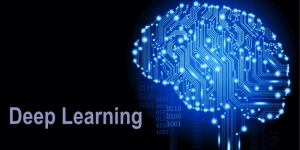Deep learning is a strong and transformational technology in artificial intelligence (AI). From speech recognition to image classification, its applications permeate various industries, revolutionizing how machines perceive and interact with the world. At the heart of deep learning lies a fundamental principle that drives its remarkable capabilities. If you’re interested in learning more about deep learning, consider enrolling in an Artificial Intelligence Course in Chennai offered by FITA Academy. This blog post embarks on a journey to uncover the basic principles of deep learning, exploring its core concepts and shedding light on its inner workings.
Understanding Neural Networks
Neural networks are a key component of deep learning. Inspired by the structure of the human brain, neural networks consist of interconnected layers of artificial neurons, each processing and transmitting information. Through a process known as forward propagation, data is fed into the network, traversing through multiple layers where computations occur. These computations involve weighted sums and activation functions, enabling the network to learn complex patterns and relationships within the data.
Feature Learning and Representation
One of the key principles of deep learning is feature learning, where the network autonomously discovers relevant features from raw data. Unlike traditional machine learning approaches that rely on handcrafted features, deep learning algorithms extract hierarchical representations directly from the input data. This hierarchical representation allows the network to discern intricate patterns and nuances, empowering it to make accurate predictions and classifications.
Gradient Descent and Backpropagation
At the core of training neural networks lies the optimization technique known as gradient descent. By iteratively adjusting the network’s parameters to minimize a predefined loss function, gradient descent enables the network to learn from data and improve its performance over time. Crucial to this process is backpropagation, which computes the gradient of the loss function with respect to each parameter in the network. Through backpropagation, errors are propagated backward through the network, guiding parameter updates and facilitating learning. This fundamental concept is often covered in an Artificial Intelligence Online Course.
The Role of Deep Architectures
Deep learning distinguishes itself from shallow models by its use of deep architectures, characterized by multiple layers of abstraction. These deep architectures allow neural networks to capture complex and abstract relationships within data, leading to more robust and expressive representations. With advances in computational power and algorithmic innovations, deeper networks have become increasingly feasible, paving the way for breakthroughs in various AI applications.
Challenges and Limitations
Despite its remarkable success, deep learning is not without its challenges and limitations. The reliance on large amounts of labeled data, the susceptibility to adversarial attacks, and the lack of interpretability are among the notable concerns. Addressing these challenges requires ongoing research and innovation, as researchers strive to enhance the robustness, reliability, and transparency of deep learning systems.
The basic principles of deep learning encompass the intricate interplay between neural networks, feature learning, optimization techniques, and deep architectures. By harnessing the power of data and computation, deep learning has propelled AI to unprecedented heights, driving innovations across diverse domains. As we continue to unravel the mysteries of deep learning, we embark on a journey towards realizing its full potential and shaping a future where intelligent machines augment human capabilities and enrich our lives. For those interested in mastering these principles, a Training Institute in Chennai offers excellent opportunities to delve deeper into this field.
Also Read: Artificial Intelligence Interview Questions and Answers

